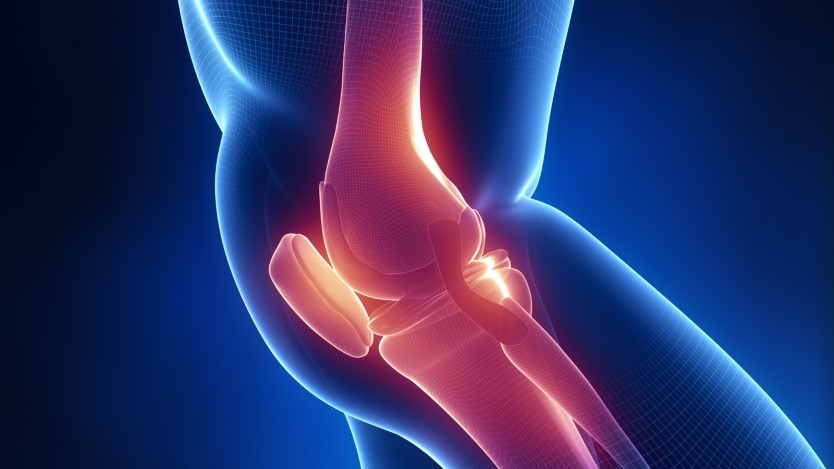Postoperative period after anterior cruciate ligament surgery

- What happens after cruciate ligament surgery?
- Postoperative period of anterior cruciate ligament reconstruction in hospital
- Post-operative of ACL surgery at home
- Possible postoperative complications of anterior cruciate ligament surgery
- The postoperative period for anterior cruciate ligament surgery is simple but must be carried out very well to achieve the best results.
- During the postoperative period in the hospital, the patient is explained all the instructions to be followed during the postoperative period at home.
- Although postoperative complications are rare, they are also possible.
What happens after cruciate ligament surgery?
Cruciate ligament surgery consists of the implantation of a ligament, which can be from a tissue bank or a tendon from the patient himself, which allows the patient to regain the stability lost due to the rupture. The case of anterior cruciate ligament rupture is the most common among knee ligament injuries and knee injuries in general.
In the case of posterior cruciate ligament rupture, in some cases it is possible to repair it through rehabilitation because the regenerative capacity of this ligament is greater than the rest.

Do you need knee ligaments surgery?
Request a free and immediate appointment with our specialists in Traumatology
Anterior cruciate ligament reconstruction surgery is usually performed using the surgical technique of knee arthroscopy, which consists of making 3 or 4 mini-incisions in the sides of the knee, the introduction of an arthroscope, which consists of a mini-camera with a light connected to a monitor via fibre optics where the surgeon can see the inside of the knee; and the replacement of the torn anterior cruciate ligament with a donor or the patient's own tendon by attaching it to the bones that make up the joint.
Postoperative period of anterior cruciate ligament reconstruction in hospital
Once the orthopaedic surgeon has completed the knee arthroscopy, the patient is awakened in the operating theatre, as he/she was under the effects of regional anaesthesia and sedation in most cases. Afterwards, the patient is taken to the resuscitation room where he or she remains until his or her vital signs are fully restored and is then taken to his or her hospital room.
Once in the room, the postoperative period for the anterior cruciate ligament begins, which initially consists of taking painkillers to alleviate the discomfort of the postoperative period, cleaning the small surgical wounds to avoid possible infection and starting to mobilise the leg and support as soon as possible, trying to avoid the muscular atrophy typical of cases in which the patient is totally immobilised.
The postoperative hospital stay can range from a few hours to two days, depending on the patient's characteristics, the severity of the injury (if the meniscus or other ligaments have been repaired in addition to the anterior cruciate ligament) or if there are any complications that require the surgeon's supervision.
As we have mentioned, in the hospital the patient will be instructed with all the exercises and postoperative care that must be followed for the care of the wound and the early start of the rehabilitation of the anterior cruciate ligament.

In addition, before leaving the hospital, one of the most important exercises that the doctor will instruct the patient to perform during the postoperative period at home are those aimed at preventing blood clots in the leg. These exercises are focused on maintaining blood circulation in the feet, ankle and calf. To help with this, the surgeon may recommend the use of a special knee brace that promotes circulation in the leg.
When the time comes, the patient will be able to return home on his or her own feet but with the help of a crutch or cane to avoid putting all the weight of the body on the operated knee, at least for the first few weeks after surgery.
Post-operative of ACL surgery at home
It is recommended that during the first few weeks of the postoperative period, a family member, friend or support person should be available at home to help the patient with daily tasks that may cause overexertion of the knee, since, for example, it is not advisable to carry weight, nor is it advisable to bend the knee excessively until the ligament is well seated in the bones.
The length of the postoperative period before returning to work will depend directly on the type of work involved, being less than a week in the case of office work and considerably longer in the case of more physical work.
There are a series of tips to follow during the postoperative period at home that help to avoid complications and are mainly based on controlling physical activity and joint mobility, caring for the surgical wound and controlling post-surgical pain. These are explained in depth below:
Control of joint activity and mobility during the postoperative period
During the first postoperative days at home, it is advisable to keep the leg stretched out on one or two pillows (on the calves, never behind the knee) so that the knee remains straight, helping to reduce the swelling of the joint characteristic of the postoperative period, which usually lasts a few days after cruciate ligament reconstruction surgery. It is very important not to use heating pads to avoid heating the leg, as this will only increase the swelling of the knee.
It is also important to keep the bandage on the knee dry to avoid the possibility of infection in the surgical wounds.
After 2 to 3 weeks post-operatively, the patient may be able to put full weight on the operated leg without any problem, depending on the repair that was done in the operation, as if the meniscus, for example, had been repaired in addition to the anterior cruciate ligament, this time would be longer. In these cases, it is important to talk to the surgeon who operated on you to be more certain, as each operation is different.

Similarly, during the first few weeks post-operatively, you may be advised to wear a knee brace to avoid excessive knee flexion. This type of knee brace is adjustable and it is recommended that a physiotherapist or your doctor guide you in progressively increasing the range of movement that the brace allows.
Physiotherapy and rehabilitation sessions are recommended to start 2 weeks after surgery and can last between 2 and 6 months depending on the intensity and characteristics of the patient. These sessions are very important for the postoperative period, as the more the leg muscles are strengthened, the sooner full recovery will be achieved and at the same time the range of movement of the leg will be improved.

Do you need knee ligaments surgery?
Request a free and immediate appointment with our specialists in Traumatology
Surgical wound care during the postoperative period at home
After discharge from hospital, the patient will wear a bandage on the knee, which he/she must maintain and avoid wetting or soiling until authorised by the doctor after the first postoperative visit, which he/she will establish with the doctor before leaving the hospital.
Once the bandage has been removed, the patient can shower, avoiding getting the area wet by wrapping it in plastic wrap at least until the stitches have been removed.
In the event that you need to change the bandage that you have been given at the hospital, avoid wearing it too tightly to promote circulation.
Post-operative pain management
During the postoperative period after anterior cruciate ligament reconstruction, some pain is common as the knee adjusts to the new ligament. This pain eases with time, but your doctor will initially prescribe pain medication to control the initial pain.
It is important that painkillers are taken as prescribed by the doctor in order to avoid the occurrence of acute moments of pain.
It is important not to drive and to avoid taking aspirin or other painkillers that thin the blood, as this may delay recovery and cause bleeding.
Possible postoperative complications of anterior cruciate ligament surgery

- These complications are unlikely if the postoperative period is carried out as instructed by the doctor, but they are still possible. The patient should see a doctor if any of the following symptoms occur:
- There is bleeding from the wound that soaks through the dressing and does not stop.
- Pain persists after taking painkillers.
- Swelling or pain in the calf of the operated leg.
- If the feet or toes are dark in colour or cold to the touch.
- If the surgical wound discharges a yellowish fluid, it is swollen or reddish in colour.
- The onset of fever above 38 degrees Celsius.
The total recovery time, as mentioned above, will vary between 2 and 6 months depending on all the factors mentioned above. It is important to listen to your doctor's advice so that you can recover as quickly as possible.

Do you need knee ligaments surgery?
Request a free and immediate appointment with our specialists in Traumatology
Medical disclaimer: All the published content in Operarme is intended to disseminate reliable medical information to the general public, and is reviewed by healthcare professionals. In any case should this information be used to perform a diagnosis, indicate a treatment, or replace the medical assessment of a professional in a face to face consultation. Find more information in the links below:
